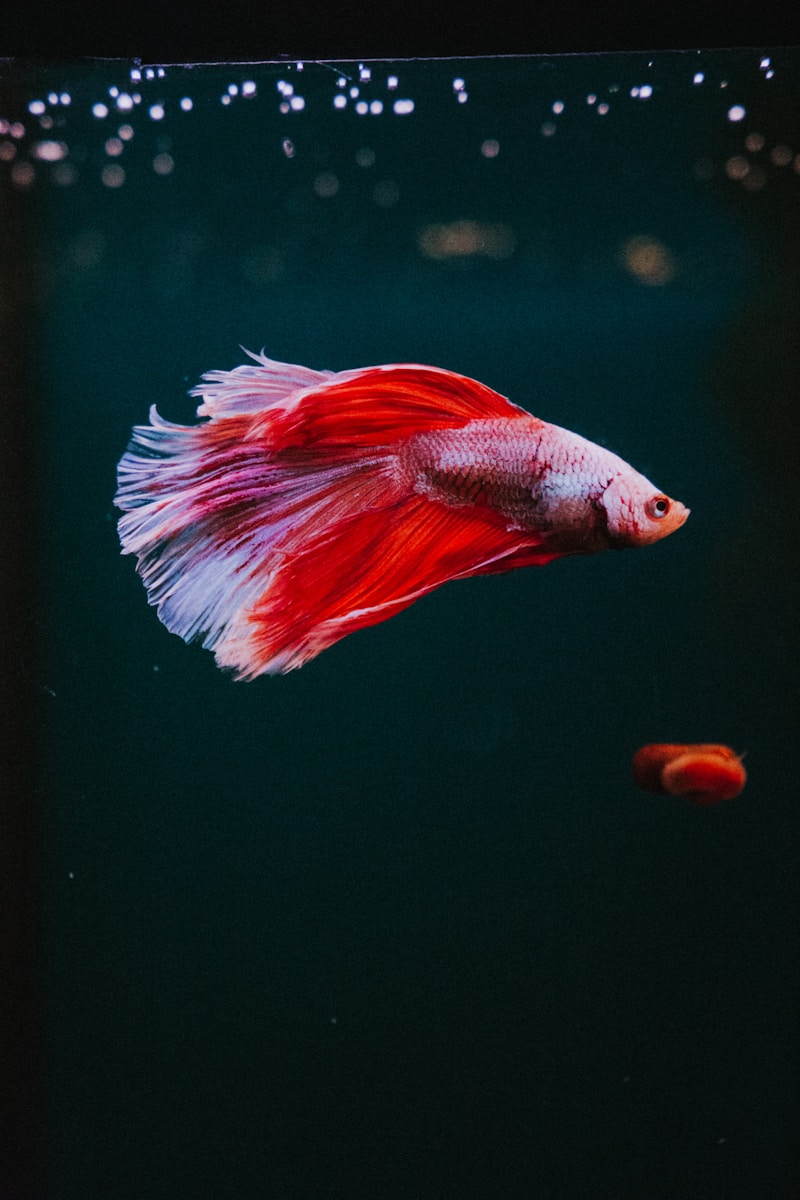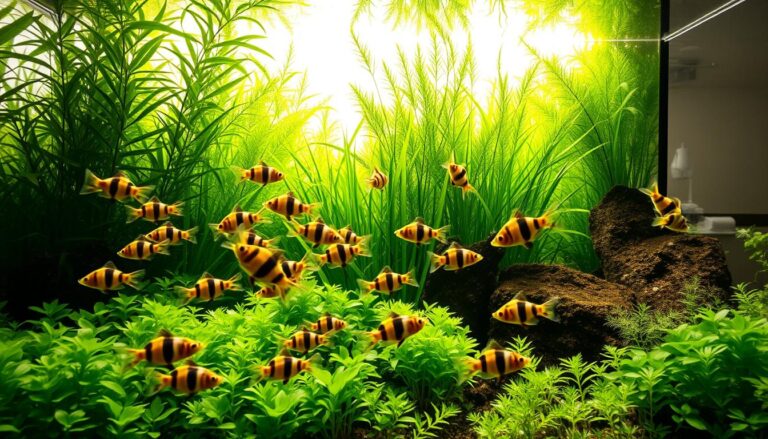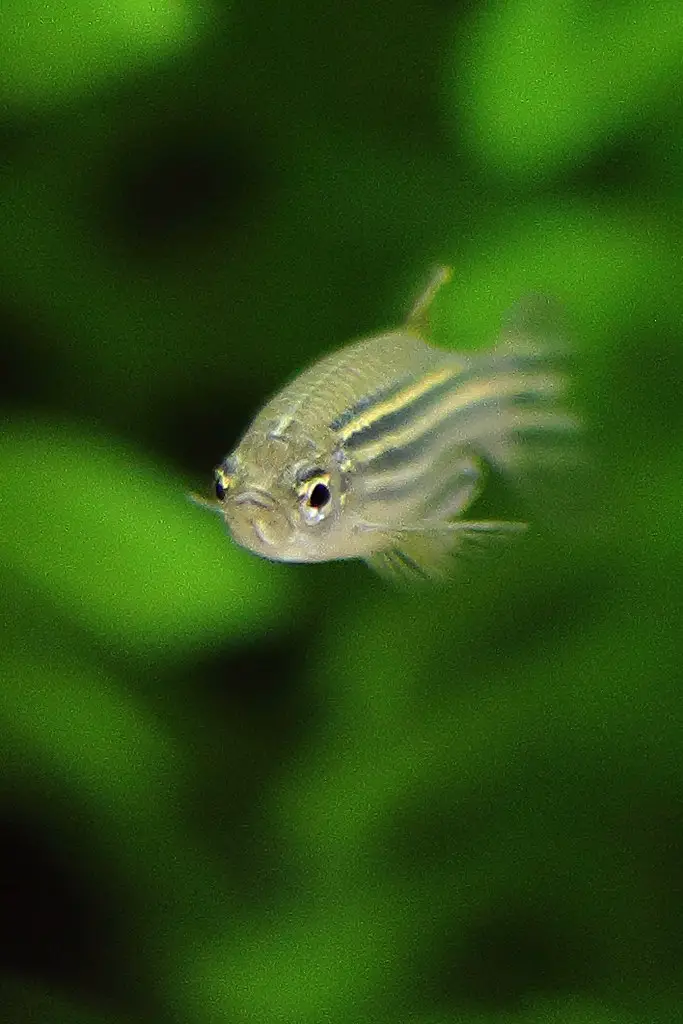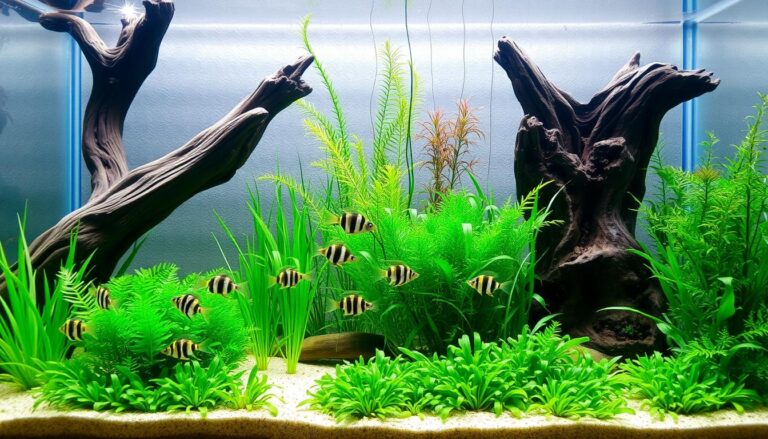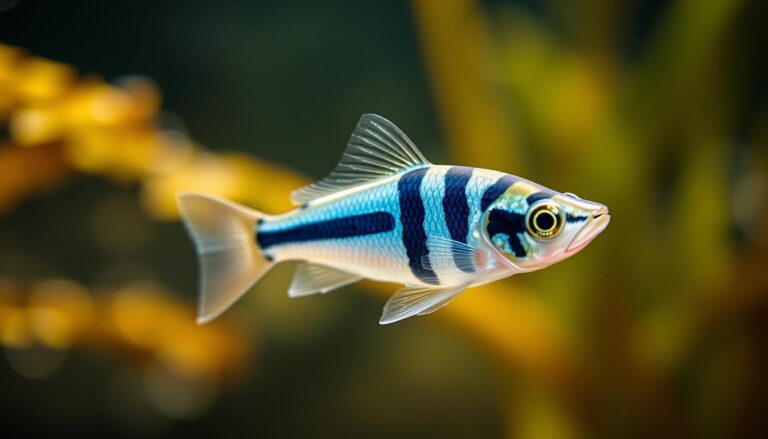Betta Fish Tank Mates: What Fish Can Live with Bettas?
Did you know that nearly 40% of betta fish owners have seen their betta show stress or aggression when paired with unsuitable tank mates? Choosing the right companions for your betta isn’t just about looks—it’s a science. It involves space, behavior, and water conditions. Betta fish, popular in U.S. aquariums, are often seen as solitary. But with the right knowledge, they can live well with others.
This guide will show you what fish can live with bettas. It will help turn your tank into a peaceful underwater world.

Table of Contents
Key Takeaways
- Over 70% of betta stress cases stem from poor tank mate choices, making compatibility critical.
- Proper tank setup and species selection boost betta longevity by up to 30%.
- Shy species like neon tetras and corydoras catfish are top choices for betta communities.
- Water temperature and pH levels must align perfectly to ensure peaceful coexistence.
- Gradual introductions reduce aggression by 50%, according to aquarium studies.
Understanding Betta Behavior and Needs
Betta fish are colorful but need care. Knowing their habits and needs helps them live well with others. Watch how they act and what they like in their home to make a good tank.
Temperament and Natural Instincts
Bettas are territorial and can be aggressive. They show this by flaring their fins and checking the tank often. They like to be alone and need space to move.
- Aggression toward long-finned or brightly colored species
- Preference for solitary spaces like plant thickets
- Need for frequent oxygen access at the water surface
Ideal Environmental Conditions
They need stable water and interesting decorations. Here’s what bettas require:
| Parameter | Ideal Range | Poor Conditions |
|---|---|---|
| Water temperature | 78–82°F | Cold or fluctuating temps |
| pH level | 6.5–7.5 | High acidity or alkalinity |
| Hiding spots | Live plants, driftwood | Open tanks without cover |
Too many fish or unstable water can stress them. Keep the water clean with regular changes. Give them room to swim and plants to hide. Knowing these basics helps avoid problems with tank mates.
Setting Up a Healthy Home for Your Betta Community
A thriving betta community starts with a well-planned tank. Bettas need space to explore while feeling secure. Aim for a minimum 20-gallon tank to reduce aggression and stress. Proper setup includes hiding spots, stable water conditions, and safe decorations.
- Add live plants like java fern or anubias for natural cover and oxygenation.
- Use smooth rocks and driftwood to create nooks without sharp edges.
- Install a filter with adjustable flow—betta’s delicate fins prefer gentle currents.
| Parameter | Target Range |
|---|---|
| pH | 6.5–7.5 |
| Temperature | 75–80°F |
| Ammonia/Nitrite | 0 ppm |
Weekly water tests and 25% water changes keep toxins low. Avoid overcrowding—allow 2–4 gallons per inch of fish. Floating plants like hornwort provide shaded zones for shy species. Decorate densely but leave open swimming areas. Stability in water chemistry and space helps bettas coexist peacefully with tank mates.
Exploring What Fish Can Live with Bettas
Bettas do well with tank mates that like the same water and are calm. Finding the right fish starts with knowing their tropical home and peaceful nature. Here’s how to choose the right friends for your betta:
Tropical Species Options
Active but not aggressive tropical fish are great for betta tanks. Think about:
- Corydoras catfish: Peaceful bottom dwellers that eat leftover food and like being in groups of five+
- Schooling rasboras or small tetras (like ember or harlequin varieties)
- Live plants and mystery snails add natural enrichment without stressing bettas
Follow guidelines like Aqueon’s recommendations for group sizes and tank space. A 27-gallon tank or larger is best for groups of 8-10 fish total.
Considerations for Non-Tropical Tank Mates
Cold-water fish like goldfish are not good because they need different temperatures. Bettas like 75-82°F water, but goldfish prefer cooler. Mixing them can cause stress and disease. Also, non-tropical fish might take all the food. Choose fish that like the same water for a happy tank.
Designing a Balanced Betta Community Tank
Creating a balanced betta community tank needs careful planning. It’s important to ensure harmony between your betta and its tank mates. A good environment supports their natural behaviors and health. Start by focusing on space, layout, and water conditions for all.
Tank Size and Layout
A spacious tank is key. Choose a tank of at least 20–30 gallons. This gives your betta and tank mates enough room to swim without stress. Overcrowded tanks can cause aggression and poor health. Plan the layout carefully:
- Use live plants like Anubias or Java Fern to create hiding spots.
- Add driftwood or smooth rocks for enrichment without sharp edges.
- Leave open swimming areas and provide secluded zones with floating plants.
Compatible Water Parameters
Stable water conditions are crucial. Bettas prefer warm, slightly acidic water. Make sure all tank mates like similar water:
- Temperature: 78–80°F with a reliable heater.
- pH: Aim for 6.5–7.5 using pH test kits to avoid stress.
- Toxins: Keep ammonia and nitrite levels at 0 ppm through weekly partial water changes and a mature filtration system.
Regular monitoring is key to prevent sudden changes. A balanced setup combines space, plants, and consistency for a thriving community.
Benefits of a Mixed-Species Betta Tank
A mixed-species tank turns a betta’s home from lonely to lively. Healthy biodiversity makes the tank feel like a natural place. It’s where fish can interact and grow together.
Active fish like neon tetras or corydoras make bettas curious. They encourage bettas to explore and play. This reduces stress and boredom.
“A varied community creates a living ecosystem that benefits all inhabitants.”
Mixed-species tanks also keep the water clean. Bottom feeders like algae eaters clear out debris. Mid-level swimmers help spread oxygen.
This balance makes caring for the tank easier. It keeps the water stable, which bettas need. Watching different fish interact is fun and educational.
Here are some benefits:
- Stress reduction through natural social cues
- Enhanced tank cleanliness via species-specific roles
- Opportunities to watch fish coexist peacefully
But, choosing the right fish is key. Make sure each species gets along. A lively aquarium is not just pretty. It’s a place where bettas and their friends can flourish.
Challenges and Considerations in Community Tanks

Betta fish love calm places, but living with others can cause problems. They get aggressive when they feel their space is being threatened. Signs like flared gills or chasing other fish mean it’s time to act.
Aggression and Territory Issues
Bettas are very territorial, which is more noticeable in small tanks. You might see them:
- Chasing smaller fish
- Attacking fish with fins
- Always defending a certain spot
Big tanks or ones with too many fish can help reduce fights. Plants like hornwort can act as barriers, giving bettas places to hide.
Managing Stress and Compatibility
Stress makes bettas sick. Watch for these signs and find ways to help:
| Stress Sign | Fix |
|---|---|
| Clamped fins | Add cave-like decorations |
| Loss of appetite | Feed in separate areas |
| Erratic swimming | Reduce tank activity hours |
Choosing the right tank mates is key. Fish like danios can keep bettas busy and calm. Safe spots, like PVC pipes or clay pots, also help reduce stress.
Expert Tips for Introducing Betta Tank Mates
Adding new fish to your betta’s tank needs patience and planning. Follow these steps for a smooth introduction. This helps reduce stress for all fish.
Gradual Introduction Techniques
- Begin with a quarantine period for new fish. This checks their health and adjusts water conditions.
- Use a tank divider to keep the betta and new fish apart for 2–3 days.
- Gradually mix tank water between containers over several days. This helps fish get used to each other’s water.
- Remove the divider during meals to watch how they interact without full exposure.
Monitoring Behavior and Adjustments
| Stress Signs | Action Steps |
|---|---|
| Aggressive chasing or fin flaring | Reintroduce divider or relocate aggressive fish |
| Refusal to eat or hiding | Provide additional hiding spots like plants or caves |
| Physical injuries or torn fins | Isolate injured fish immediately |
Watching your fish closely is important. Change the tank layout or fish if there are fights. Being patient and consistent is key for peace in the tank.
Top 5 Fish Options for Betta Coexistence
Choosing the right tank mates for bettas is key. It’s about finding fish that match their mood and living space. Here are five species that do well with bettas:
| Fish | Tank Size | Lifespan | Notes |
|---|---|---|---|
| Mystery Snails | 5+ gallons | 1 year | Clean algae, peaceful, but avoid overcrowding. |
| Ghost Shrimp | 10+ gallons | 1-1.5 years | Scavenge uneaten food; transparent bodies reduce aggression triggers. |
| Feeder Guppies | 10+ gallons | 5 years | School in groups of 6-10; avoid fin-nipping varieties. |
| Cory Catfish | 10+ gallons | 2-3 years | Active bottom-dwellers; prefer soft substrate. |
| Harlequin Rasbora | 10+ gallons | 5 years | Peaceful schooling fish; prefer planted tanks. |
Each fish listed likes the same water as bettas, making them great friends. For more info on compatibility, check out the Betta Fish Tank Mates guide. Watch how they get along when you first introduce them.
Caring for a Diverse Aquarium Environment
Keeping a betta community tank thriving needs regular care and attention. It’s important to keep all fish healthy and the ecosystem balanced. Let’s look at how to make your aquarium vibrant and stress-free for all.

Routine Maintenance Tips
Weekly checks are crucial. Begin by testing water parameters weekly to ensure stable levels of ammonia, nitrite, and nitrate. Aim for 25% water changes every two weeks, using a gravel vacuum to remove debris. Clean filters monthly but avoid rinsing them in tap water—use old tank water instead to preserve beneficial bacteria.
Feeding and Nutritional Guidance
Feed small portions twice daily. Offer a mix of high-quality flakes, pellets, and live/frozen foods like brine shrimp to meet varied dietary needs. Betta fish are carnivorous, so prioritize protein-rich options, but avoid overfeeding—remove uneaten food after two minutes to prevent decay.
- Rotate food types to prevent nutritional gaps.
- Monitor aggressive eaters to ensure all fish get enough food.
- Adjust feeding schedules if stress or competition arises.
A stable environment and balanced diet are key for a happy, diverse aquarium. Small steps today ensure long-term success for your finned friends.
Creating a Stress-Free Community for Betta Fish
To make sure betta fish are happy in a community tank, start with careful planning. A peaceful setting helps them relax and act naturally. Making a few changes can make any tank a safe haven for these vibrant fish.
Habitat Enrichment Ideas
Here are some ways to make the space better:
- Add live plants like java fern or Amazon swords for natural cover.
- Use gentle LED lights to mimic soft daylight conditions.
- Include smooth river rocks to create non-aggressive climbing spots.
Providing Safe Hideouts
Hideouts are key for bettas to hide. Here are some ideas:
| Type | Benefits | Examples |
|---|---|---|
| Planted Caves | Reduces aggression | Resin or ceramic caves with moss |
| Driftwood Structures | Encourages exploration | Curved branches for hiding |
| Artificial Tunnels | Easy to clean | Plastic tubing or acrylic caves |
“A well-designed habitat lets bettas feel secure without overcrowding,” says aquatic biologist Dr. Clara Nguyen.
Place decorations to make swimming areas open but also have many hiding spots. Use floating plants like hornwort to soften the light and give shade. Always check hideouts for sharp edges that could hurt their delicate fins.
Maintaining a Harmonious Betta Tank
Keeping betta fish and their tank mates healthy requires regular care. Start by changing 25% of the water weekly to remove toxins. Use a test kit to check ammonia, nitrite, and pH levels every week. Also, gently scrape algae from glass and decorations.
- Test water weekly for ammonia and nitrate levels.
- Feed small portions to avoid uneaten food fouling the water.
- Quarantine new fish before introducing them to the main tank.
Watch fish behavior daily. Signs of aggression, like fin nipping or hiding, mean changes are needed. A community tank works best when there’s enough space. Keep bettas away from fin-nipping species. For more on species compatibility, see BettaBoxx’s guide.
Regular care helps prevent stress. Clean the substrate weekly with a siphon and replace filter media monthly. Pay attention to betta’s fins and appetite. These signs show their health. Being patient and consistent helps create a stable home for all.
Conclusion
Choosing the right betta fish tank mates is key to a healthy aquarium. Bettas do well with calm, similar-sized fish that like the same water. A well-set tank with plants, hiding spots, and the right water conditions is essential.
Introducing fish slowly and watching their behavior is crucial. This helps avoid fights, which can happen when new fish join. Keeping the tank clean and changing the water regularly helps all fish stay healthy.
A well-thought-out tank lets bettas and their friends live together happily. With patience, research, and regular care, your aquarium can be a lively, peaceful place. Focus on these steps to keep your underwater world in balance.
FAQ
What fish can live with bettas?
Some fish like rasboras, neon tetras, and corydoras can live with bettas. It’s important to pick smaller, calm fish. This helps avoid stress and aggression.
Are guppies suitable tank mates for bettas?
Guppies can work, but watch out for aggression. Their bright colors might upset your betta. Opt for guppies with less bold colors.
Can I keep snails or shrimp with my betta?
Yes, snails like mystery snails and shrimp like ghost shrimp can do well. But, make sure your betta isn’t too aggressive. It might see them as food.
How many fish can I keep with a betta?
It depends on your tank size. A 5-gallon tank is best for one betta and maybe one or two small fish. A 10-gallon tank can hold a few more. Always watch for too many fish.
How do I introduce new tank mates to my betta?
Slowly introduce new fish. Use a floating method or a separate tank to avoid fights. Watch their behavior closely, at least for the first few days.
What should I look for when choosing tank mates for my betta?
Choose calm fish that stay in different parts of the tank. Research their nature and needs to make sure they get along with your betta.

